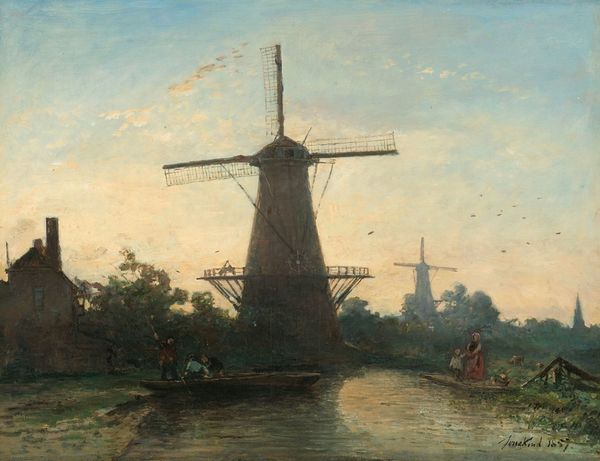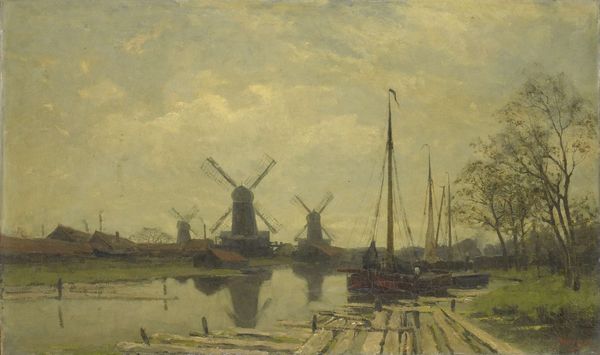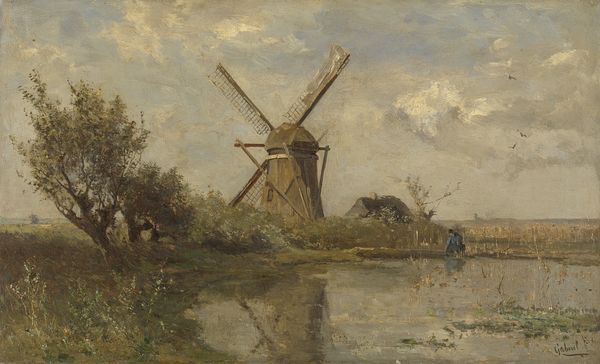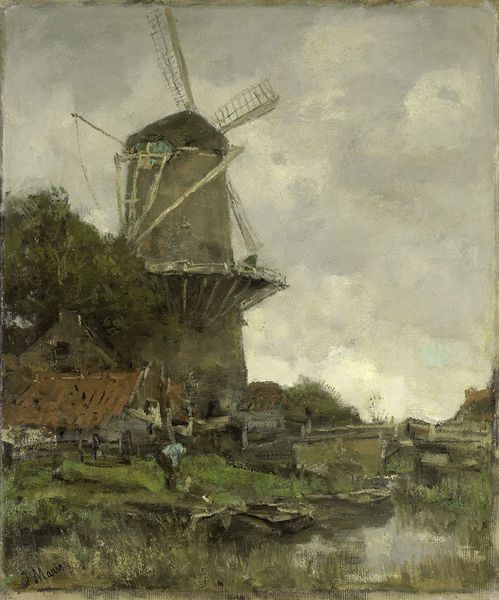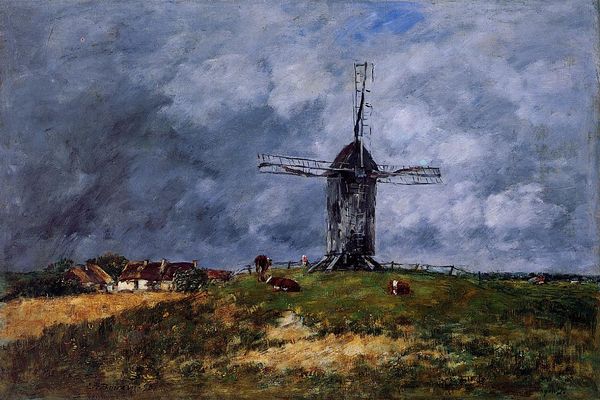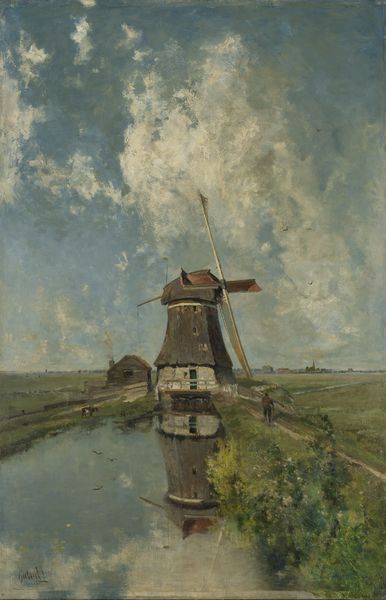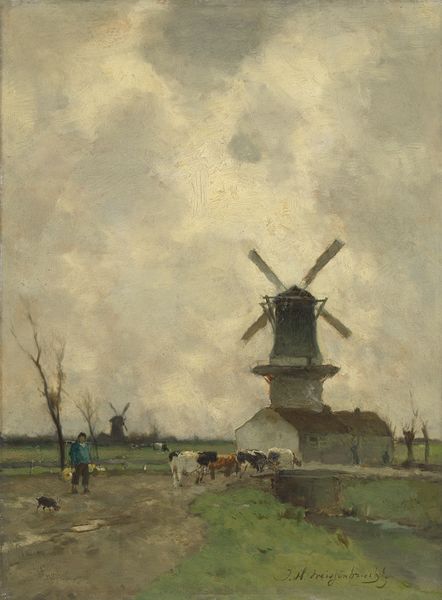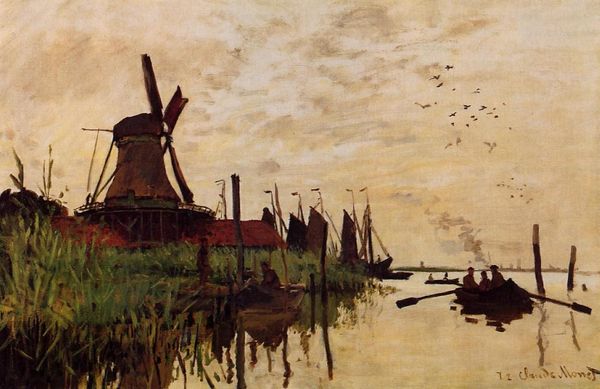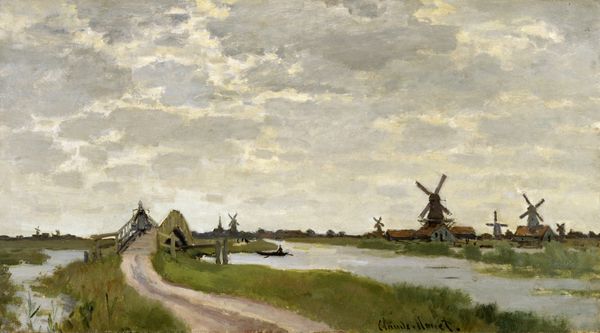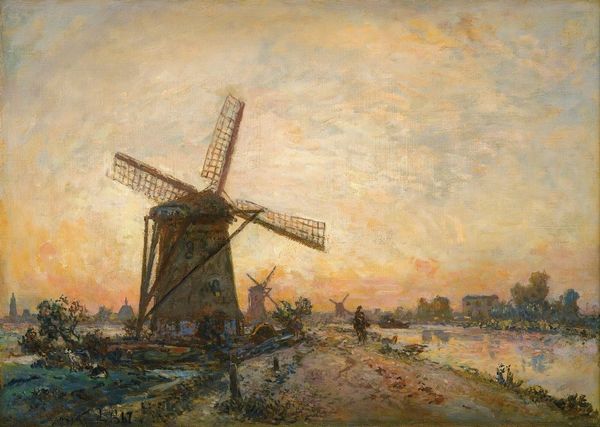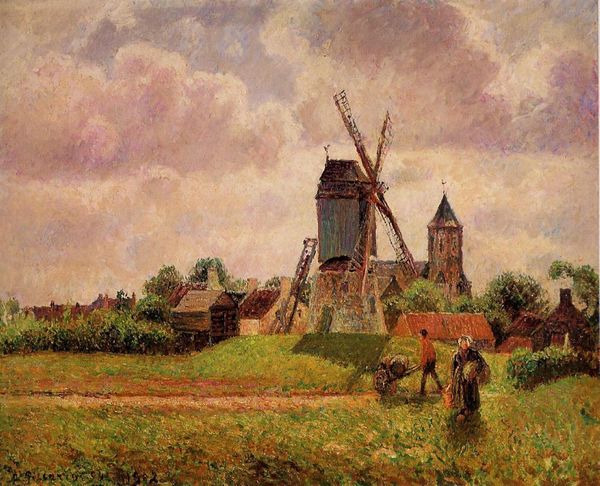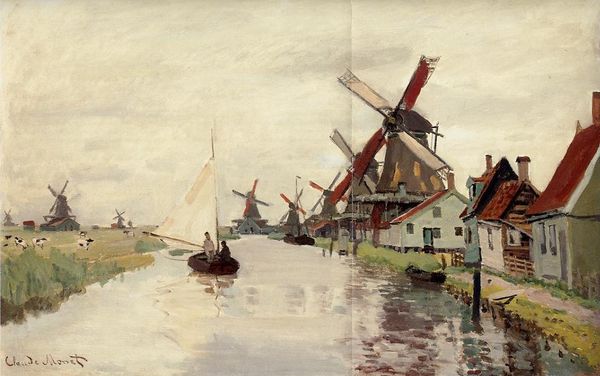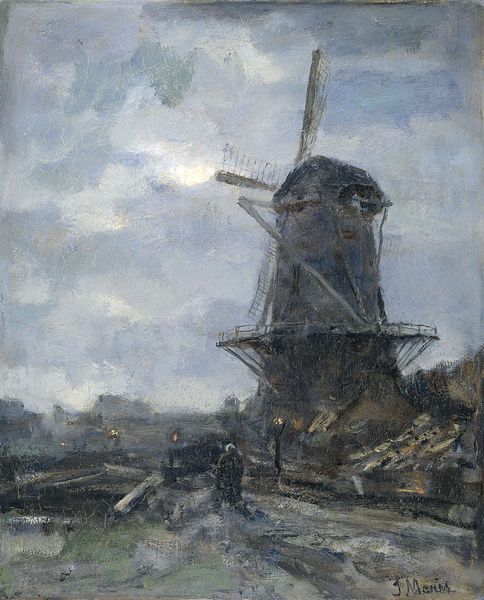
Dimensions: 62 x 50 cm
Copyright: Public domain
Curator: Standing before us is Eugène Boudin's "Dutch Windmills," an oil painting from 1884. The canvas presents a nocturnal waterscape dominated by two windmills, their silhouettes stark against a clouded sky. Editor: It's somber, almost eerie. The moonlight filtering through those heavy clouds casts a strange light on the scene, doesn't it? There’s a loneliness that emanates from it, a kind of industrial gothic vibe. Curator: Boudin was instrumental in popularizing plein-air painting. Imagine him, on location, capturing the fleeting effects of light and atmosphere. What material choices do you think contributed to this emotional impact? Editor: Well, the texture is undeniable; you can practically feel the roughness of the impasto in the cloud formations, that churning mass. The dark palette certainly lends itself to the solemn mood. Was he documenting actual Dutch windmills, or are they more a figment of his imagination, symbolic of something else? Curator: Considering Boudin's French identity, these windmills represent his participation in the larger artistic interest of the time with the romantic picturesque landscape, a style in opposition to the emerging industrial age and new artistic venues that prioritized commerce. What societal tensions might this scene reflect? Editor: Absolutely, and beyond a romanticism, these images provided a very particular brand of modern public consumption in picture postcards and cheap color lithography reproductions that became status symbols displayed on mantlepieces and parlors throughout Europe. In addition, one could reflect on what the social conditions of such laborious artistic processes looked like. Was Boudin, who was known for including people from different walks of life in his work, giving work to art students who struggled financially or paying well-known artisans? Curator: Those are vital material considerations to think about. I think both the stylistic conventions and socio-economic aspects reveal a great deal about how paintings can function as tools in reflecting on the transformation of the European experience at this moment. Editor: Precisely! And perhaps it encourages a reflection on the social underpinnings of making and seeing art that we too participate in, consciously or not, here and now.
Comments
No comments
Be the first to comment and join the conversation on the ultimate creative platform.
